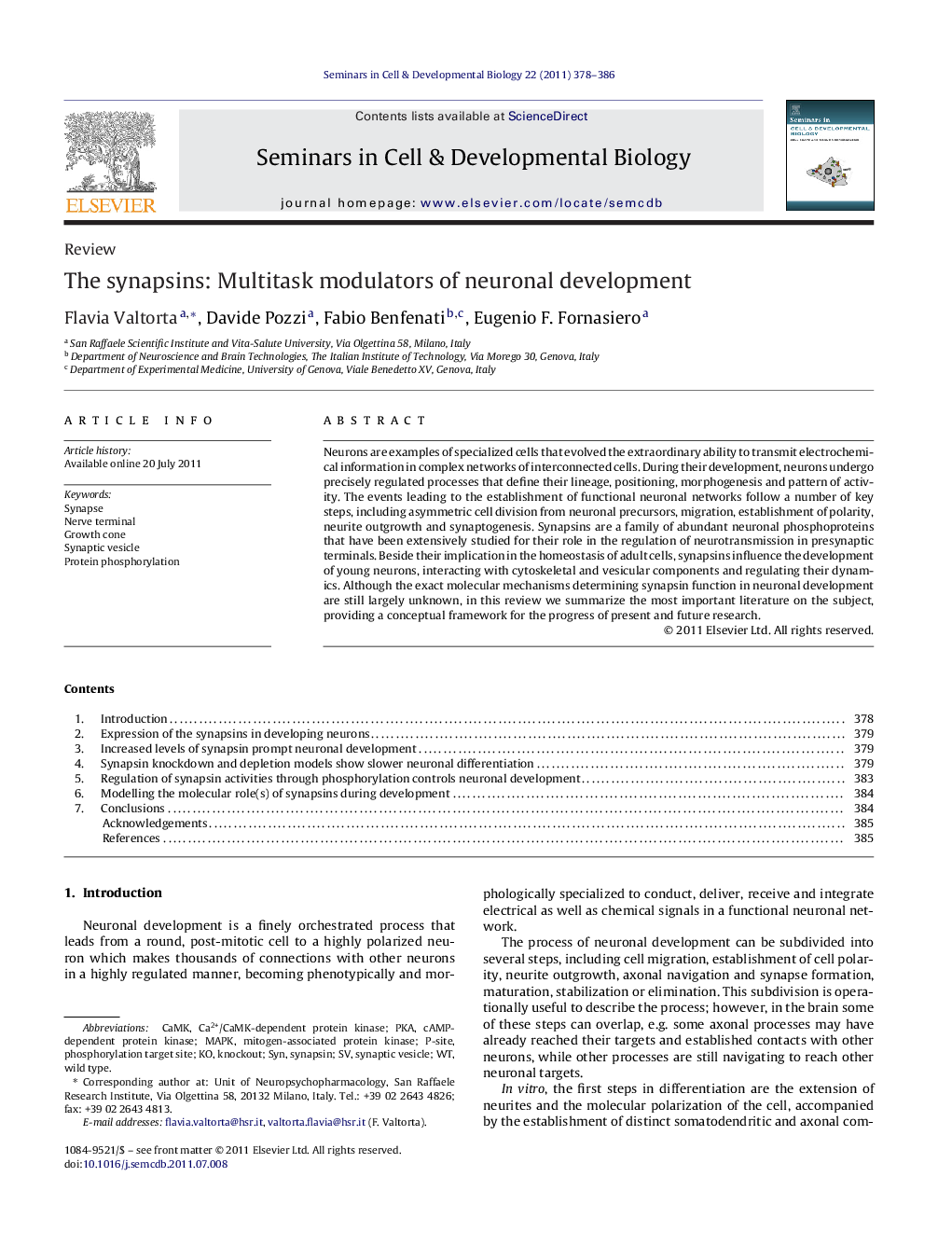| Article ID | Journal | Published Year | Pages | File Type |
|---|---|---|---|---|
| 2202945 | Seminars in Cell & Developmental Biology | 2011 | 9 Pages |
Neurons are examples of specialized cells that evolved the extraordinary ability to transmit electrochemical information in complex networks of interconnected cells. During their development, neurons undergo precisely regulated processes that define their lineage, positioning, morphogenesis and pattern of activity. The events leading to the establishment of functional neuronal networks follow a number of key steps, including asymmetric cell division from neuronal precursors, migration, establishment of polarity, neurite outgrowth and synaptogenesis. Synapsins are a family of abundant neuronal phosphoproteins that have been extensively studied for their role in the regulation of neurotransmission in presynaptic terminals. Beside their implication in the homeostasis of adult cells, synapsins influence the development of young neurons, interacting with cytoskeletal and vesicular components and regulating their dynamics. Although the exact molecular mechanisms determining synapsin function in neuronal development are still largely unknown, in this review we summarize the most important literature on the subject, providing a conceptual framework for the progress of present and future research.
► The events leading to the establishment of functional neuronal networks follow a number of key steps, including asymmetric cell division from neuronal precursors, migration, establishment of polarity, neurite outgrowth and synaptogenesis. ► Synapsins are a family of abundant neuronal phosphoproteins that have been extensively studied for their role in the regulation of neurotransmission in presynaptic terminals. ► Beside their implication in the homeostasis of adult cells, synapsins influence the development of young neurons, interacting with cytoskeletal and vesicular components and regulating their dynamics. ► Although the exact molecular mechanisms determining synapsin function in neuronal development are still largely unknown, in this review we provide a conceptual framework for the progress of present and future research.
